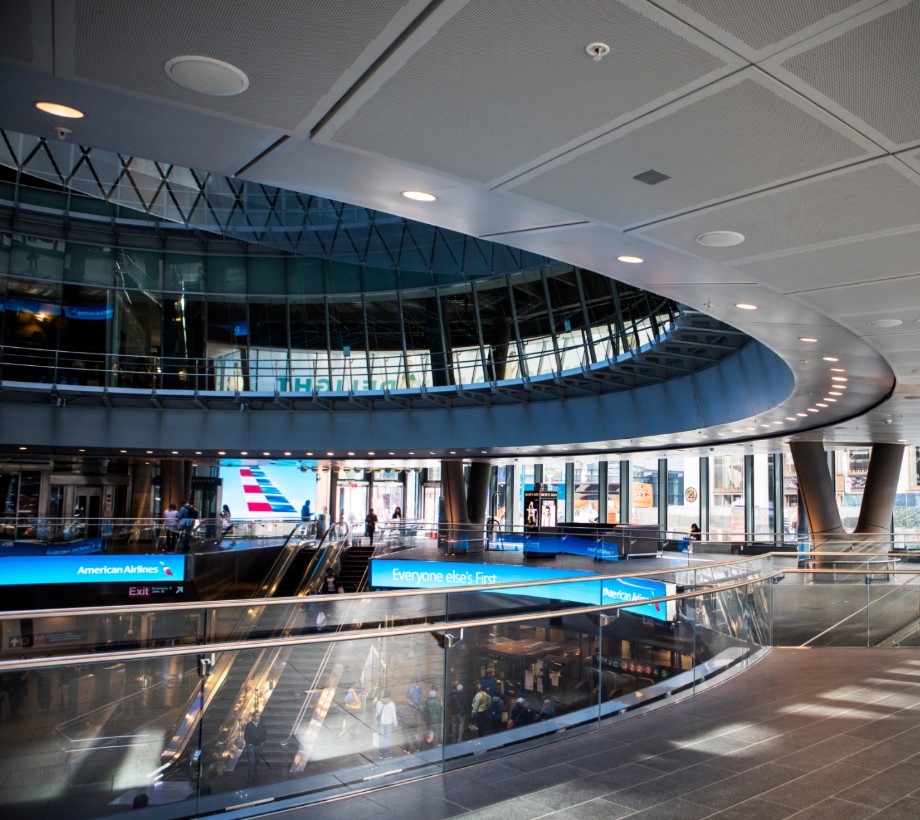Fulton Center: A Model for the Future?

by TF Hottel
More than eight million New Yorkers rely on city infrastructure to work, play, plan, and grow. Perhaps nowhere is this need more obvious than in MTA subway stations, and we’re excited that Fulton Center has been highlighted in an exploration of sustainable maintenance.
This summer, the non-profit organization Urban Design Forum released Maintaining: Public Works in the Next New York, a thought-provoking collection of proposals and case studies on the maintenance of NYC infrastructure such as its parks, roadways and housing. Spurred by experiences of public infrastructure as “ugly,” “brutish,” “degrading” and “crumbling,” not to mention too often inequitable and unsafe, UDF invited civic-minded experts to brainstorm on topics like community land trusts, wastewater conversion, and subway stations as social spaces. Specifically, what kinds of mindset shifts and policy moves might transform stations into welcoming, thriving public spaces?
In “Deliver Transit and Retail Together,” contributor Eve Michel highlights Fulton Center as an example for NYC’s future. Drawing on her experience as Chief Architect at the MTA Capital Construction Company, she outlines how the center’s master lease operation structure leverages public-private partnership and divides maintenance responsibilities between lessees and advertisers, successfully combining transportation, commerce and civic purpose for an efficient, beautiful environment:
“With the goal of maximizing rent and reducing MTA operating expenses, a private developer was selected through a Competitive Request for Proposals process to operate under a master lease structure that allows for revenue-generating digital advertising, retail stores, and kiosks. The arrangement with the master lessee sees the MTA receive base and participation rent from commercial usage and digital advertising/screens. The lessee is also responsible for meeting daily maintenance and long-term capital asset management standards—providing an experience that befits a dynamic civic space.”
Michel urges readers to consider three points learned through this public-private partnership: 1) The right mix of retail uses is vital for attracting both subway riders and pedestrians, 2) Digital advertising is a major revenue contributor, and the developer and advertiser are responsible for both supplying and updating state-of-the-art systems, 3) All tenants connected their fire alarm systems to the overarching network, which affected capital costs.
Michel considers Fulton Center a successful public space, and users seem to agree. The center boasts a Google Review score of 4.3 stars, with almost 4,000 reviews. In the last three months, reviewers have praised the station’s cleanliness, accessibility and architecture. Positivity reigns about the convenience of numerous casual dining spots, retail stores and subway lines all in one attractive location. Downtown Alliance president Jessica Lappin notes:
“Lower Manhattan is the poster child for how public and private investment together can transform an under-performing business district into a dynamic neighborhood where people want to work, to live and to spend their free time. And it’s only getting better. The growth and diversity of Lower Manhattan’s economy has been tremendous and serves as an engine of prosperity for the entire region. There are worthwhile lessons to be learned through its achievements.”
photo, Mark Weinberg
Tags: developing lower manhattan, Fulton Center, ppp, public private partnerships

